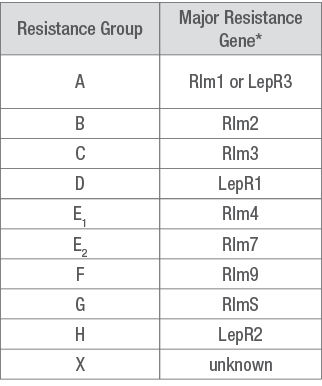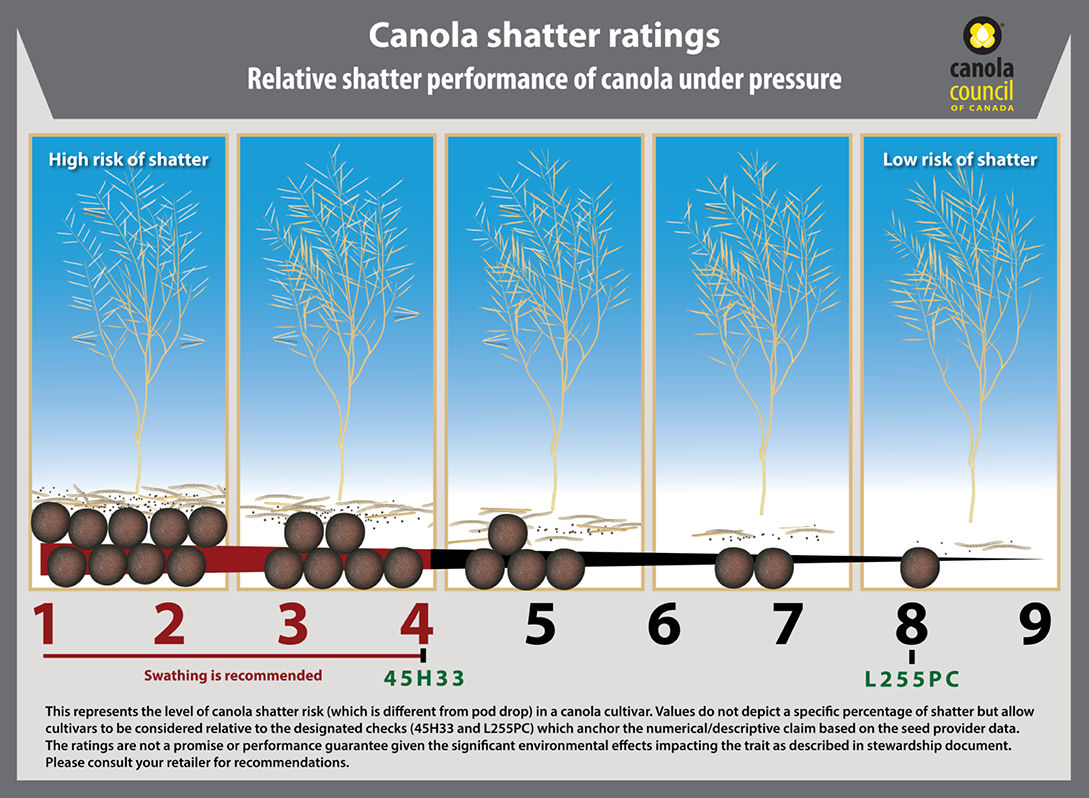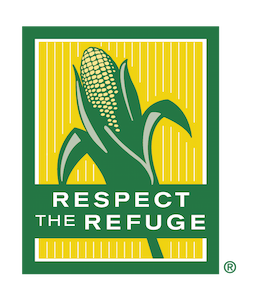Canola Trait Chart
June 23, 2022
Canola products may include traits that provide protection against specific herbicides and are the result of transgenic transformation and other traits that provide resistance to some diseases or agronomic traits that are the result of traditional breeding and are not the result of biotechnology.

Blackleg1
Blackleg is a major fungal disease caused primarily by the fungus Leptosphaeria maculans. Through traditional breeding, cultivars of Brassica napus (Argentine type) were identified as moderately resistant and resistant to the blackleg pathogen. It should be stressed however, that these traits help reduce blackleg infection to specific races of L. maculans. but does not indicate that the cultivar is immune to the disease. Currently there is a voluntary labeling system for canola products that details current resistance identification (Table 2.)
Cultivars with a severity index of less than 30% of the cultivar Westar are considered resistant “R”, but there is not a minimum standard for resistant blackleg across the industry. It is important to note that there are races of L. maculans that can override the resistance, thus a holistic management strategy should be used.

Clubroot2
Clubroot is a serious soil-borne disease of cruciferous plants caused by Plasmodiophora brassicae. Infection results in root galling, which can cause premature death. Currently there are no viable measures that can remove the pathogen economically from a field once it has colonized the field. To help prevent and manage clubroot, farmers can:
- Rotate canola every three years
- Scout proactively and comprehensively to help locate and identify clubroot
- Minimize soil movement
- Control weed hosts and volunteer canola
- Select clubroot resistant hybrids if clubroot is a risk
Although there are cultivars that are labeled as clubroot resistant, there is no uniform testing for resistance across the canola seed industry. The seed industry in Canada has agreed that a canola cultivar that has 70% less infection than non-resistant checks can be classified as resistant. As with blackleg, a resistant cultivar can be substantially negatively impacted by various races of the pathogen when spore loads are high. Therefore, a holistic management strategy should be used to manage this disease.
To determine if a resistant hybrid should be planted, select a canola product based on local resistance requirements:
- If no clubroot spore, but clubroot has been identified locally, then select non-clubroot resistant hybrids or hybrids with single source clubroot resistance (CR).
- If the spore load is low, then select single CR hybrids or hybrids with multi genetic CR.
- With high spore load or new virulent pathotypes, then select canola hybrids with multi genetic resistance.
Pod shatter resistance
Straight cutting canola, instead of swathing first and combining later, has been increasing dramatically since canola products with pod shatter tolerance were developed. This native canola trait coupled with other agronomic strategies have increased the use of straight cutting. Products with pod shatter tolerance may not have the same level of protection, and those with poorer ratings for pod shattering should be managed more carefully.3

DEKALB® straight cut (SC) canola hybrids are selected for excellent harvestability to help speed up harvest while reducing loss and risk. Straight cut plus (SC+) hybrids carry an additional trait for enhanced pod shatter protection. In addition to pod integrity, DEKALB SC hybrids feature early maturity and quicker dry down allowing for an early, fast and smooth harvest. Natural dry down means a desiccant isn’t always necessary, which can eliminate the need for another spray pass in the fall.
Sources
1 Blackleg. 2021. Canola Encyclopedia. Canola Council of Canada. https://www.canolacouncil.org/canola-encyclopedia/diseases/blackleg/
2 Clubroot. 2021. Canola Encyclopedia. Canola Council of Canada. https://www.canolacouncil.org/canola-encyclopedia/diseases/clubroot/#:~:text=Clubroot%20is%20a%20serious%20soil,premature%20death%20of%20the%20plant.
3 Senko, S. 2021. Not all pod shatter resistance is the same. Canola Digest. https://canoladigest.ca/september-2021/not-all-pod-shatter-resistance-is-the-same/
2019_14100






